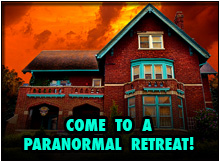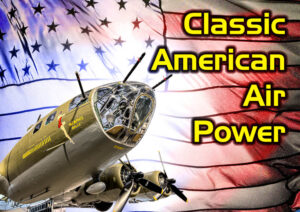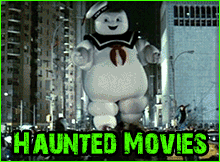Two New York Air National Guard pilots, with the best view of the crash of TWA Flight 800 last July, are disagreeing about what they saw immediately before destruction of the Boeing 747-131 jetliner.
One believes the airliner was struck by a fast-moving object coming from the east, while the other saw only a fiery trail from the west.
However, both believe a violent explosion ripped the aircraft apart, propelling some of its passengers high enough that they did not hit the water's surface until 3-4 min. after the initial explosion.
Maj. Frederick C. Meyer, pilot of an HH-60 helicopter from the Air National Guard's 106th Rescue Wing, has been freed from an FBI gag order preventing him from giving interviews about the 1996 disaster off Long Island, N.Y. The copilot, Capt. Christian Baur, remains under FBI instructions not to speak about the accident. But, two officials familiar with his testimony told Aviation Week & Technology in detail what he told investigators.
In the days immediately after the accident, before being ordered not to speak, Meyer discussed his initial impressions with news media he chose Aviation Week as the first news organization to hear a detailed account of his recollections and his testimony to federal investigators.
Meyer and Baur were in one of the wing's two aircraft operating north of the crash site. The helicopter was operating over Long Island about 12 mi. north of the TWA crash site. Baur, the copilot, was at the controls practicing instrument approaches. The crew was awaiting darkness so they could begin training with night vision goggles.
The key point on which the two pilots disagree is whether a streak of light appeared from theopposite direction of the flight of TWA 800 (which was flying from west to east after takeoff from Kennedy Airport), a possible indication of an intercepting missile or some other object.
Meyer's attention was first called to the area of the sky where the accident occurred "by a streak of light moving from my right (west) to my left (east)," the same direction as the TWA flight, he said.
Baur's account differs on this point. According to the two officials who have heard both pilots' accounts, Baur, on the left side of the cockpit, saw a streak moving from left to right toward the approaching TWA aircraft BEFORE the initial explosion.
"Almost due south (of the helicopter), there was a hard white light, like burning pyrotechnics, in level flight," Baur told investigators from the National Transportation Safety Board, FBI and a Federal anti-terrorist task force. "I was trying to figure out what it was. It was the wrong color for flares. It struck an object coming from the right and made it explode."
Baur's first impression was that there had been a midair collision, possibly between two light aircraft that tow banners along the beach.
"They had witnessed these aircraft come very close to each other at that time of day, and that's what they assumed," the second official said.
Meyer could not actually see the aircraft, but only the streak, and he admits that Baur, a younger man, has better eyesight. Moreover, Meyer adds, "Whatever Chris saw on the left side I didn't see because he blocked my view." Baur disputes this, saying the explosions and crash were virtually dead ahead of the aircraft.
The helicopter was executing a missed approach and was about halfway down Runway 24 at the Francis S. Gabreski International Airport at Westhampton Beach, N.Y. It had started a climbing left turn to the south when the accident occurred. The sun had not yet set and the sky was still bright.
According to Meyer, the streak was about 15-20 degrees above his line of sight and perhaps 15 degrees left of the aircraft's centerline.
"I don't know if it was a missile that struck the airliner," Meyer said. "Nothing at that moment said 'missile' to me. I spent a number of years in Vietnam and had seen missiles fired, some of them at me. But, that was 25-year-old missile technology, which left smoke trails. I understand today that they are made with smokeless rocket fuel and don't leave trails. What I saw was a streak of light, not a smoke trail."
The streak of light that Meyer saw made a very shallow, gradually descending arc. He points out that he never saw the actual airframe of the TWA 747 within the streak or subsequent explosions or smoke trails. It was virtually identical to the trajectory of a meteor, with only a slight curve. But unlike a meteor, the streak was red-orange in color, he said.
Meyer observed the descending streak for 3-5 seconds. Then there was what Meyer describes as a hard, very sudden, yellowish-white explosion that looked identical to the detonation of an antiaircraft shell. He did not suggest an antiaircraft weapon was fired at TWA Flight 800, however.
"It left a cloud of smoke just like a flak explosion does," Meyer said. "One to two seconds later, there was a second, hard explosion appeared slightly below and behind where one would have anticipated the streak of light to have gone. The trajectory at that point appeared to be slightly bent down and slowed."
A new detail in Meyer's story was that almost immediately there was a third explosion and fireball. Meyer doesn't remember if there was an explosion and fireball or if the third explosion turned into the fireball.
That was a soft explosion unlike the first two," Meyer said. "It began as a tiny point and it grew very rapidly into a huge fireball four times the diameter of the sun. I was dumbstruck."
Baur also saw three explosions. But he contends that they started from left (east) and went to right (west). He said the explosions created a "huge waterfall of flame that cascaded down" the first official said. "The column of flame was being whipped around violently. First it was tumbling, and then it refined itself into a spiral. The explosions were all before the cascade of flame began."
In the helicopter, Baur spoke first, asking if it was pyrotechnics. ANG operations that night were to have included flares dropped by a HC-130 transport aircraft. The crew then called the Gabreski tower.
"We said we'd observed a fireball south of the field and we would like clearance to the beach to investigate," Meyer said. Baur actually made the call and reported a possible midair collision, the second official involved in the investigation said.
The crash time has been variously reported as being from 8:31 to 8:45 p.m., Meyer said. He believes the earlier time is more likely to be correct although he can't be sure.
Baur continued to fly the helicopter during the search while Meyer functioned as copilot and primary communicator. As they approached the crash site, after about 4 minutes of flight, debris was still falling so they slowed to avoid being hit.
"As they got closer, within two or three miles, Baur could see the aircraft body, not tumbling, but in vortex almost like inside a tornado," the second official said.
Meyer made another revelation that was the result of long reflection after the accident: "I was looking ahead... as we approached the crash site," Meyer said. "I saw some debris at 1,200 – 1,300 ft. falling at terminal velocity and fuselage fragments tumbling at 40-50 miles per hour. The things falling at high speed were bodies still strapped in their seats. That is logically inconsistent if they came from the same explosion at the same time. On reflection, I have concluded that the bodies must have been blown upward before they came down. That indicates a violent explosion."
On this point the two pilots' accounts Agree, the officials said.
"Debris was falling like snow," according to Baur's testimony. "Among the particulate there was metal and paper, some of it glowing. Through all that, things would come racing through--two or three high-speed objects like sacks of potatoes. I believed them to be bodies that had been blown upward."
The pilots' opinion differ from the conclusion of inspectors that all the passengers were in the fuselage when it ripped apart from aerodynamic forces.
In an attempt to debunk cover-up and conspiracy theories, Meyer and other ANG officials remain adamant that their unit was not part of any larger, undisclosed, multi-service operation. Operations the night of the crash were standard training flights to maintain currency with night vision goggles, rescue operations and in-air refueling.
The HH-60 flight was to be of about two hours' duration and would not extend more than 2 miles off the Long Island southern coast. The HC-130 would drop flares, rafts and rescuers and later refuel the helicopter in a communications-out, lights-out operation.
"No other people of other services were on the base at the time," Meyer said. Nor were there indications of the operations of drone aircraft, another theory that has surfaced as the possible cause of the crash. "No, there would have been some kind of notice."
TWA 800 CoverUP Overview * Friendly Fire, Salinger Style * The Fuel Tank
Internet "Proof" of Friendly Fire * The FBI * Visitor TWA Thoughts * Our Conclusion
TWA CoverUp Content Copyright © 1996 to by The Web Network Inc
HauntedHouses.com * HistoricClub.com * MurderMysteries.com * RetirementParties.com













